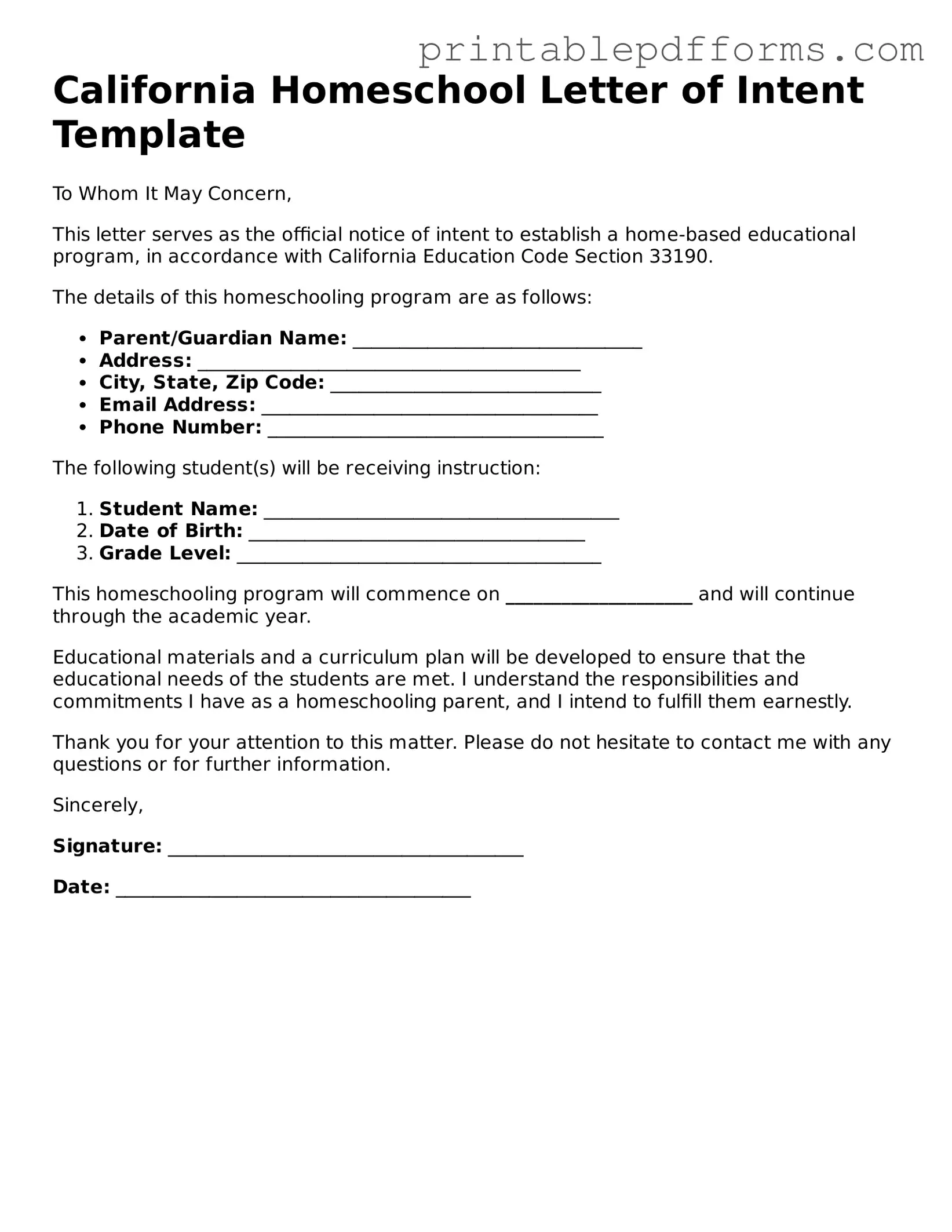California Homeschool Letter of Intent Template
To Whom It May Concern,
This letter serves as the official notice of intent to establish a home-based educational program, in accordance with California Education Code Section 33190.
The details of this homeschooling program are as follows:
- Parent/Guardian Name: _______________________________
- Address: _________________________________________
- City, State, Zip Code: _____________________________
- Email Address: ____________________________________
- Phone Number: ____________________________________
The following student(s) will be receiving instruction:
- Student Name: ______________________________________
- Date of Birth: ____________________________________
- Grade Level: _______________________________________
This homeschooling program will commence on ____________________ and will continue through the academic year.
Educational materials and a curriculum plan will be developed to ensure that the educational needs of the students are met. I understand the responsibilities and commitments I have as a homeschooling parent, and I intend to fulfill them earnestly.
Thank you for your attention to this matter. Please do not hesitate to contact me with any questions or for further information.
Sincerely,
Signature: ______________________________________
Date: ______________________________________
